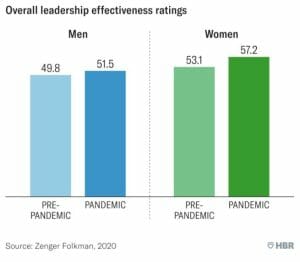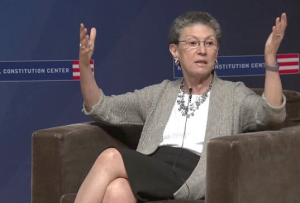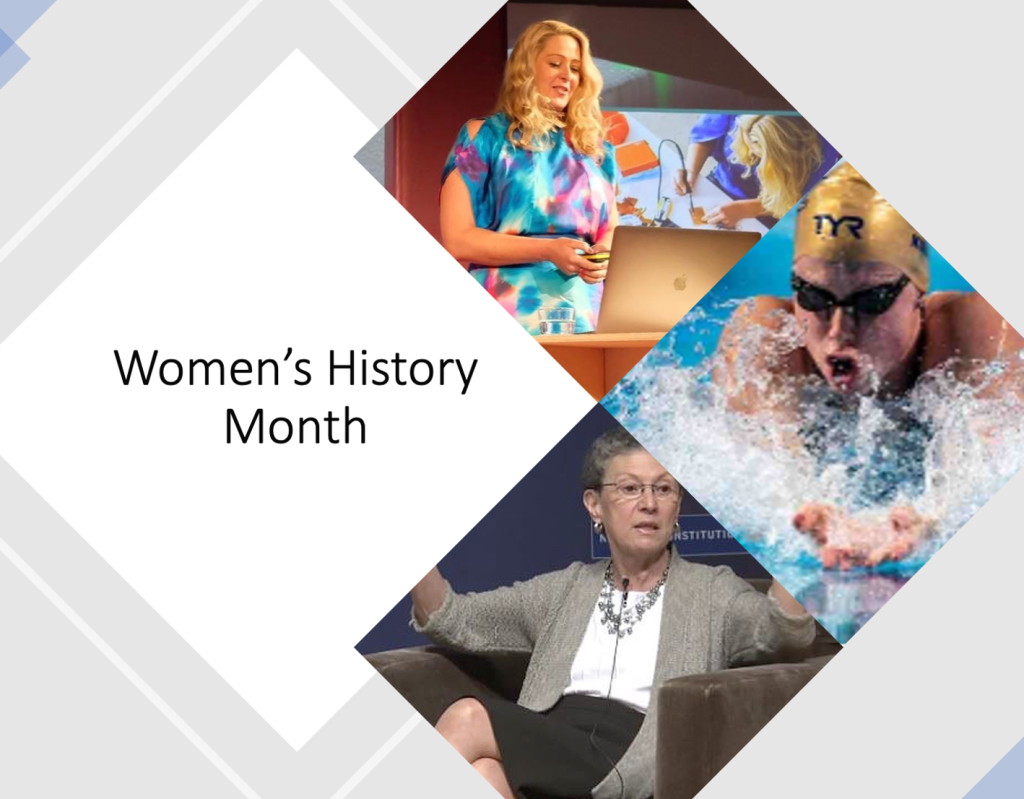March is Women’s History Month. It’s a time set aside to commemorate and encourage the celebration, observance, and study of fantastic women from American history. During this Women’s History Month, we want to take time to celebrate women in leadership. This special month of celebration has been in place since 1987 and looks at women’s contributions to society, culture, and history. However, it was in place even before that as a weekly celebration.
At Teamraderie, we are passionate about teams and the ways they develop connection, commitment, and trust. How are women different in how they lead and engage teams?
The historic Ways Women Lead study published in Harvard Business Review (HBR) identified four distinctive traits. Women bosses:
1. Encourage participation
Women leaders try to make people feel part of the organization and encourage others to have a say in almost every aspect of work.
2. Share power and information
Part of making people feel included is knowing that open communication flows in two directions. Women willingly share power and information rather than guard it.
3. Enhance the self-worth of others
Women leaders frequently give others credit and send small signals of recognition. They refrain from asserting their own superiority, which asserts the inferiority of others.
4. Energize others
Women use their own enthusiasm to get others excited. To make the upbeat leadership style credible, women bosses focus on achieving results that can be measured easily.
 The most recent research confirms these patterns persist and become more important amidst remote work. According to a HBR 2020 study, employees reporting to women had higher levels of engagement during pandemic.
The most recent research confirms these patterns persist and become more important amidst remote work. According to a HBR 2020 study, employees reporting to women had higher levels of engagement during pandemic.
Women’s History Month is a great time to give your teams an opportunity to meet exceptional women from various fields and learn about the way they lead, engage teams, and succeed.
Teamraderie has curated a set of 45-minute experiences led by exceptional women:
(1) Lilly King

Lilly King is the world’s fastest female swimmer. She holds three world records, two Olympic gold medals and is training for the 2021 Summer Olympic Games.
When it comes to women in leadership, the first one we would like to honor is Lilly King. If you aren’t familiar with King, she’s a force to be reckoned with in the sport of swimming. She competes in the 100-meter and 200-meter breaststroke and has had huge achievements throughout her career.
King is best known for being a two-time Olympian and a four-time Olympic medalist. In Rio in 2016, she brought home gold in two events, while she gained a bronze and silver medal at the Olympic Games in Tokyo in 2020.
What most people don’t know is the way King savors the ability to confront adversity in all situations. She’s been quoted saying, “I joke that I act like a guy, speaking my mind on something, calling out something I don’t like, being intimidating on the [starting] blocks.”
She went on to say, “It’s been a challenge acting like I normally do but being criticized for that. You’re seen as being cocky or arrogant, while a guy doing that is seen as a leader.”
King grew up with a lack of female role models, but her parents encouraged her to speak her mind from a young age. She was also told by an early mentor that the swimmer who works the hardest would win against even the most talented swimmer.
The many achievements of King show that she took this to heart and has been a threat in the water ever since. She’s a great example of women in leadership in the sports world and beyond.
(2) Amanda Parkes

Dr. Amanda Parkes is a celebrated engineer and leader of highly-diverse teams – including the team creating the first ‘comfortable’ high-heeled shoe.
A conversation about women in leadership would not be complete without speaking of Dr. Amanda Parkes. As a fashion technologist and bio-media designer, she has her hands in the world of fashion, textiles, and media. Since receiving her BS in mechanical engineering and BA in art history, she’s spent her time discovering how smart materials and digital technology affect the lives of everyone today.
Before moving into fashion, Parkes made educational science exhibits for places like the Science Museum in London and the Exploratorium in San Francisco. She also acted as a curator for an exhibition at the New York Hall of Sciences focused on interactive art with themes of science, art, and cultural sustainability.
As one of many women in leadership, she founded Skinteractive Studios, where she develops and researches textile projects and how they might work in fashion. In addition, she started Bodega Algae, which creates biomass to produce biofuel. She also obtained her Ph.D. from the MIT Media Lab in tangible media and acts as a professor for the Department of Architecture at Columbia University.
Leadership roles have continued for this trailblazer, as she was announced as the chief innovation officer at Fashion Tech Lab in 2017. Throughout her career, Parkes has been awarded many art and design prizes, such as the Prix Ars Electronica and the International Design Magazine Annual Design Review.
Parkes was also named a “woman to watch” by Mass High Tech in 2008. When she isn’t busy with all the other things she’s doing, Parkes speaks and lectures and has worked with Allewatch, the New York Times International Luxury Conference, and TED.
(3) Carol Berkin

Dr. Carol Ruth Berkin is the foremost authority on American women’s history. Her commentary has been popularized in dozens of documentary films.
The final name we’d like to honor today is Dr. Carol Ruth Berkin. This is another example of how women in leadership can bring about great changes. Berkin is a renowned historian who graduated from Barnard College in 1964. She also has a Ph.D. from Columbia University. She taught at Baruch College and the Graduate Center of the City University of New York.
Today, Berkin works as the Presidential Professor of History at the City University of New York. However, she’s also worked on several television documentaries as a historical commentator, best known for the PBS documentary Dolley Madison: America’s First Lady.
Berkin has written extensively about the American Revolution and women’s history, as well as the politics of the early Republic and the creation of the Constitution. Her books include Jonathan Sewall: Odyssey of an American Loyalist, Women of America: A History, First Generations: Women in Colonial America, and many more.
As a woman worth talking about during Women’s History Month, Berkin has directed summer institutes for the NEH, Mount Vernon, and the Gilder Lehrman Institute of American History. She’s also served on the Society of American Historians, the Staten Island Historical Society, and the National Council for History Education.
Findings from the Ways Women Lead Study
The Ways Women Lead study by the Harvard Business Review (HBR) offers many insights into the power of women in leadership. Women managers have broken beyond the glass ceilings and nontraditional, medium-sized organizations to show that leaders don’t all need to look or act the same.
The initial women in leadership were executives taking on new responsibilities that had otherwise been available only to men. Back at the time, these women largely adhered to the same rules that applied to men. But nowadays, things have changed, and women in leadership are adopting new habits and styles from their experiences as women.
A study by the International Women’s Forum shows many similarities between men and women in leadership, including characteristics related to children and money. However, there are also many differences in terms of leadership performance and the way leaders influence their team members.
Men often use a management style called “transactional leadership.” This boils down to offering rewards for services or punishments for not reaching goals. Men also seem more likely to wield the power they have from formal or organizational authority.
Women instead use something called “transformational” leadership. They urge team members to change their self-interests based on the group and broader goals. Power is more often ascribed to things like interpersonal skills, hard work, charisma, and personal contacts rather than stature in a company.
Another thing that is different with women in leadership is the use of interactive leadership. Women leaders often focus on making workers feel good about themselves and what they do. Many create situations that build on this feeling.
Encouraging participation, sharing power and information, enhancing the self-worth of others, and energizing people near them are all methods that women often use in leadership. At the same time, they often note that this style of leadership comes naturally. This may be based on both the chosen career paths and the socialization the women have in common.
The reality is that effective leadership doesn’t come in only one form. The organizations that will succeed will realize that and allow different people to rise to the top and make changes. Widening this path to include more women is something we can all agree should happen as we look toward the rest of Women’s History Month.
You can learn more about the curated Women’s History Month experiences here. You can also reach out to us at team@teamraderie.com.


